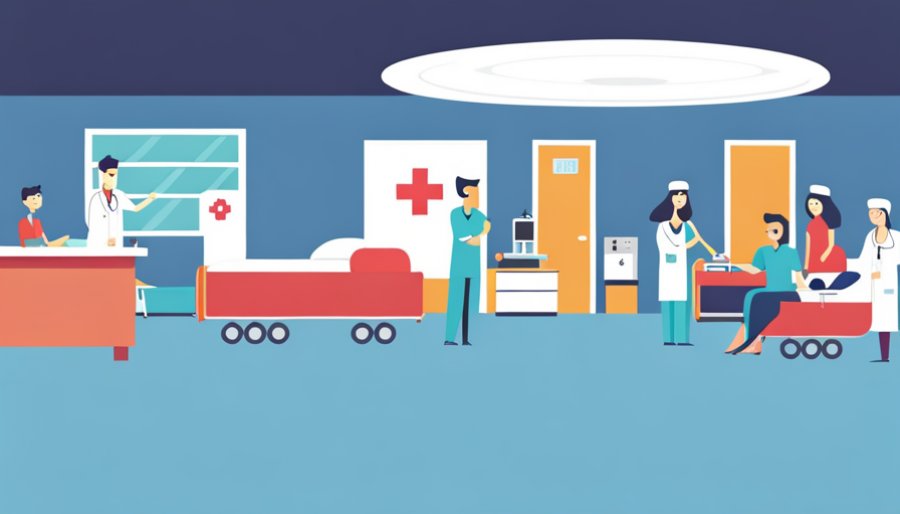Safeguarding Digital Health: Online Security for Healthcare Professionals

The healthcare sector is increasingly becoming a hotspot for cybercriminals, with hospitals, clinics, and private practices becoming prime targets. As healthcare professionals, ensuring the safety and privacy of patient data is not just a legal obligation but a moral duty. This article presents an extensive guide on how to fortify your digital defenses, maintain online security, and protect sensitive patient information in your healthcare practice.
1. Understanding the Importance of Cybersecurity in Healthcare
The digitization of healthcare has brought tremendous benefits, but it has also opened up new avenues for cyber threats. These threats can range from phishing attacks, ransomware, malware to unauthorized access to electronic health records (EHRs) and protected health information (PHI).
The fallout from a cyber attack can be devastating, leading to financial losses, reputational damage, and most importantly, patient trust erosion. The Health Insurance Portability and Accountability Act (HIPAA) stipulates stringent guidelines for maintaining patient data security, and non-compliance can lead to hefty penalties.
2. Recognizing the Threat Landscape
Cybercriminals are particularly attracted to healthcare data due to its sensitive nature and high value on the dark web. The risk of a data breach is not confined to large healthcare organizations. Small to mid-sized medical offices with weaker security measures are equally vulnerable and often viewed as easy targets. It's crucial to stay abreast of the evolving threat landscape and take proactive measures to secure your systems and educate your staff.
3. Reinforcing Email and Internet Security
Cybercriminals often exploit email as a gateway to launch attacks. Phishing emails, designed to appear legitimate, trick users into clicking on harmful links or sharing sensitive information. To combat this, healthcare professionals should be cautious before clicking on any hyperlink received via email. Hovering over a link can reveal its true destination, and it's advisable to enter the website address directly into the browser rather than clicking the link.
Unsecured public Wi-Fi networks are another vulnerability that can be exploited by hackers. If you must use public Wi-Fi, ensure it's secure by verifying that the login page URL begins with 'https.' Alternatively, using a private hotspot from a reliable carrier service or a Virtual Private Network (VPN) is a safer option.
4. Implementing Strong Password Policies

Strong, complex passwords are a simple yet effective barrier against unauthorized access. A secure password should be at least 15 characters long, involve a mix of letters, numbers, and symbols, and avoid common words or phrases. Regularly changing passwords and not sharing them with others can further strengthen security.
Multi-factor authentication (MFA) is also highly recommended. MFA requires users to present multiple forms of identification, such as a password and a security code sent to their phone, making unauthorized access much more challenging.
5. Conducting Regular Security Assessments
Regular security assessments can identify vulnerabilities in your cybersecurity setup. This involves evaluating network and system security, data security, user access and authentication, and physical security. Regularly checking the security of data storage systems and the network infrastructure can significantly improve the overall cybersecurity posture of your healthcare organization.
6. Prioritizing Employee Education and Training
Cybersecurity is not just a technical issue; it's a human one too. Employees need to be aware of the potential threats to patient information and how to protect against them. Regular training can keep your staff updated about the latest threats and best practices for dealing with them. Topics can range from recognizing phishing attacks, using secure passwords, protecting against malware, to implementing multi-factor authentication.
7. Leveraging Secure Communication Channels
Secure communication platforms can significantly enhance the security of patient data. Secure messaging platforms, Virtual Private Networks (VPNs), and encrypted email are some of the secure channels that can be utilized. VPNs, in particular, offer an encrypted connection between a device and a network, allowing remote access to patient information while maintaining security. VPN can be use for many purposes, for example, using a VPN in China to visit blocked contents, using a VPN to hide ones real IP address etc.
8. Implementing Data Backup and Recovery Systems
Effective data backup and recovery systems are critical to protect against data loss in the event of a cyber attack or system failure. Regularly backing up data, maintaining multiple copies of backups in secure locations, and having robust data recovery processes in place are key aspects of a solid data backup and recovery strategy.
9. Partnering with Reliable Technology Providers
Working with trusted technology partners who prioritize cybersecurity can offer an additional layer of protection. These providers can deliver remote patient monitoring services powered by robust cybersecurity frameworks, ensuring that patient data is accessed securely.
10. Taking Care of Physical Security
While focusing on digital security, don't neglect the physical security of your office. Unauthorized access to your physical space can lead to compromise of your digital defenses. Ensure that your server room is always locked, and devices containing sensitive data are never left unattended.
In conclusion, as healthcare professionals in the digital age, it's imperative to prioritize cybersecurity and protect patient data. By following these tips, you can effectively safeguard your practice against potential cyber threats and maintain patient trust.
Previous Posts: